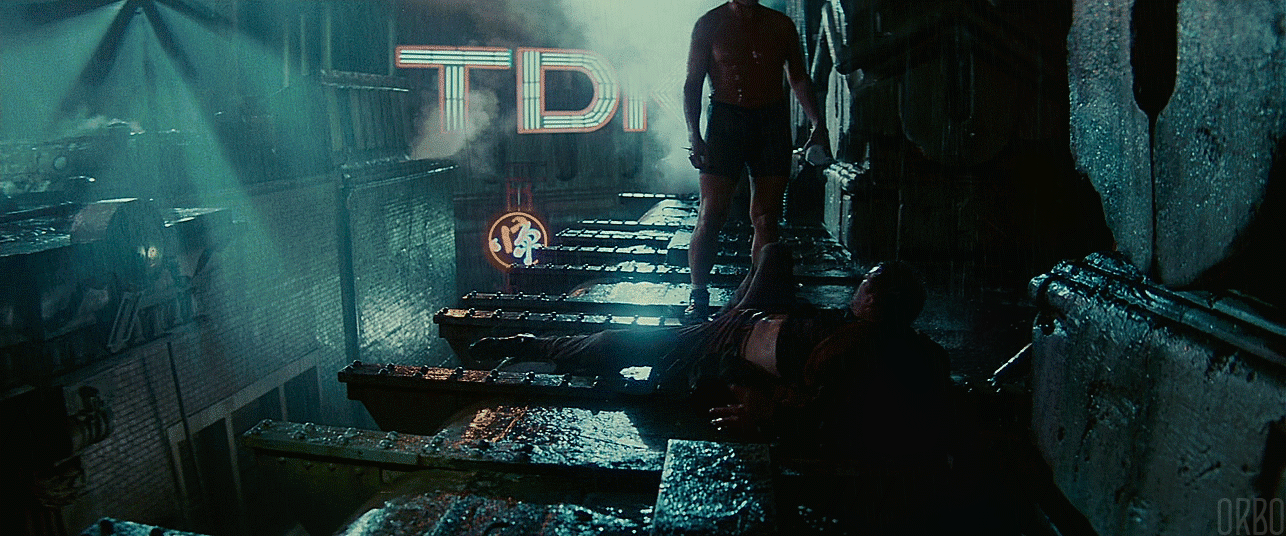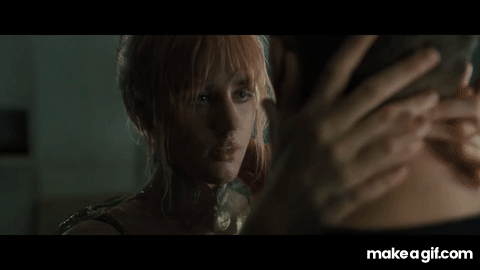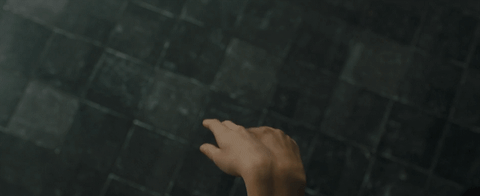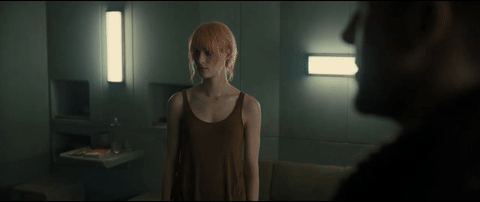Thick Envelopes :: Scanning Synthetic Realities
- ~rooks /|\

- Jan 8, 2020
- 6 min read

As we approach another semester at Pratt it is time for planning and designing a provocative and meaningful studio prompt. This Spring I am teaching our arch201 Intermediate Design studio, which is a second-year, fourth semester, undergraduate architecture design course. The students are coming out of the Fall with a foundation in plan organization and programming at the scall of a small institutional extension. This brief focusses on developing architecture as a vertical paradigm within the fabric of New York City. Section is the primary organizing device and strong attention is on structure and envelope. My interest here is in how the envelope of the building can be considered as a thick territory that permeates through the structure to create a strong overlay with the city and pull the civic space of the street into a public institution, architecture as a thick envelope.
The prompt for our Lottery statement and trailer provided by the coordinator was, "What is the relationship between cinema/film and architecture today?" I did my graduate studies at Columbia GSAPP on the tail end of the major digital shift, not just in architectural productions, but in the integration of software and computation into the design process. This shift emerged during the 90s as software for drafting and project automation was being adopted n professional practice and the playful tinkerers of academia started to question what else it could do. The software to easily construct synthetic realities, virtual digital models, of projects was limited in the architecture space, so we turned to cinema.
Applications like Maya and 3DS Max were made for special effects and generating motion camera inhabited virtual environments. They also contained powerful output/rending engines for the time, helping to bring greater automation to raster-based image creation. Probably the most exciting side effect of these new design programs for me was the integration of animation and later simulation tools within the same platform as 3D modeling. This meant that we could output moving emotional images that scanned deeper into the virtual space of our projects and provided immersive experiences for the viewer. It is not surprising then that a huge wave of discussion formed in academia around issues like Time and Sequence and Virtual Reality. Books such as Deleuze's Cinema I and II became popular readings, and while film and architecture have often had a strong relationship due to the inhabitation of built space by humans, the crossover of cinema into architecture intensified in the 90s and early 00s.
There is a lot more history here, and a good subject for deeper analysis, that I am sure many people have written about and explored though design and pedagogy, but I will leave that for another day. This influencing period is important to what the relationship between the two mediums is today and how that can influence a design studio. My process to define these in 150 words began with many pages of free writing and wordplay, visual diagrams of thoughts and phrases floating and coalescing around the page. I wrote a couple of drafts, they were too heady without clear substance to grasp onto. I tried again, took a break, and then stepped up to the keyboard to compress two decades of thoughts on this subject into a few sentences that would speak to twelve undergraduate architecture students. I am not sure if what follows will meet that criteria, but my good friend Cam (who is not an architect or filmmaker) provided some useful writing and conceptual feedback along with some encouraging comments:
"It does sound smart and fun, I think a lot of smart people would be interested."
Thanks Cam, a little ego boost is always appreciated when putting new and untested ideas out there for all to see. Our discussion also drifted into our life long shared diversion and interest in video games when he made the connection between my trailer image (above) and a recent SciFi Thriller game, SOMA. It is one I have never played, but remember being excited about during its development.
As a side note, I wonder if it is more appropriate to look at the intersection of video games and architecture today.
"It's just a scan, it'll hurt about as much as getting your picture taken" :: SOMA Trailer
"Does the color moving down the image represent scanning or is it just cool?" Cam
The comment about scanning from Cam and watching the SOMA trailer helped me zero in on the title for the studio. There were several drafts all building upon last semester's Think Space with Thick Envelopes and adding a dimension of film as storytelling:
:: Civic Territory
:: Architectural Fictions
:: Dream Architecture
:: Synthetic Realities (the leading candidate at the time)
I like to think of films as a medium for transporting us into synthetic realities. For a controlled duration we are living a different story, immersive and emotional, visually and auditorially rich. Film and the experience of cinema interface directly with our most overt senses and captures our attention. I think that one of the primary intersections here with architecture is around the experience of time. Both film and architecture can be transitory, fluid, episodic, dense, and repetitive. Our participation in the story is a hyper-space transit constrained to about two-hours of inhabiting dream territories. Similarly, architecture engages with all our senses, but the experience is drawn out, fluid in time, especially in urban contexts where nearly all our world is defined by built environments. The two mediums support each other, film provides the virtual platform for the story, architecture houses the tectonics of sensation.
Enough ruminating on the process, here is my statement with the "trailer" (full-res video this time) following for reference:
---
THICK ENVELOPES :: SCANNING SYNTHETIC REALITIES
Film and architecture are mediums of sensation and affect, occupying a rift between material reality and synthetic dreams. Architecture forms a fabric of constructed reality deeply layered and interwoven with the human experience. Film instantaneously transports viewers beyond the present by hijacking the imagination through the senses and entangling the physical experience with virtual reality. This studio explores overlaps of constructed views, framed sequences, transient inhabitations, and visual effects as thick layers of an architectural envelope permeating through section.
We will analyze and extract dense metaphors that capture us in film and deploy them in the design of architectural fictions. Buildings are stories with the potential to hijack our emotional root code, unlocking access to our shared cultural histories, perspectives, and speculations. Architecture can support a participatory community of storytellers and viewers generating synthetic realities.

---
When I learned that the project for the semester would be about film, specifically a vertical addition to an NYC institution to house a film center, I started making a list of movies I wanted to bring as an influence to the studio. The list kept grown, I organized it, thought of more things and got a little overwhelmed. How could I introduce these students to my cinematic interests and keep them focused on architecture? My mental database of films, affect, editing, cinematography, and stories are unique, a product of my explorations, diversions, and critical interests. There would be a disconnect. Then I thought, old and new, sequels and remakes, Blade Runner. Specifically, the scene from Blade Runner 2049 came to mind where the virtual companion Joi performs a holographic integration with a physical person. A place to start.
I grabbed a few gif images from around the web of some of my favorite and architecturally influential scenes from both the original (1982) and the sequel (2017).
Not all of them made the cut, and I wanted to integrate these aesthetic influences with some of my own, so I started with a base of my recent topographic collage, reoriented as vertical scan lines with a linear transformation down through the square frame.

I layered and multiplied that with Blade Runner's face in the sky urban billboard in a horizontal pan. It is dark with shimmering speckles of light and the recognizable face element slightly askew and off-center, punctuated by the vibrant swipe of the flying police car (still one of the best fly car visuals imho).

Then came a couple of vertical scan wipes with some Levels adjustments and heavy Divide layer blending. The motion is just a transform keyframe in AfterEffects.


The final layer jumps forward to Balde Runner 2049 with the scene that started this process, Joi's overlay integration. While I hoped for hyper parallelism with the layer blending and conceptual language, this one uses a Screen blending (rather than Overlay blending which was just too dark) to glide into the thick territory of the flowing pulsating images below. A dreaming floating effect layered with a dreaming floating effect.

That's about it, besides a lot of frustration trying to get a manageable size gif out of AfterEffects. Exporting an AnimatedGif is easy with the Media Encoder integration, just export to Media Encoder, choose Animated GIF as your format, tweak the settings if necessary, and encode. I ended up with a 90mb image, which would not be very web-friendly, so I opened it in Photoshop (after trying a bunch more settings in the encoder). and did a good old fashioned Save for Web as an animated gif? I had to reduce the color depth to 24, give it a 50% Lossy parameter, and shrinking form the specified 1200x1200 to 600x600. There was a lot of visual distortion in the compression, but it got closer to 5mb which I am willing to roll with in this hyper-connected present. I actually think the color compression was an improvement, more blending and visual ambiguity, a more gritty synthetic reality.
The Lottery is up, now it is in the hands of the students. I am looking forward to a fun semester of grappling with the speculation of Synthetic Realities in architecture.
















![Comics Beyond Fiction :: [Trans-] FICTION 2020](https://static.wixstatic.com/media/dc9b92_ced3d4dc90354df2af26b92211adbb58~mv2.jpg/v1/fill/w_980,h_597,al_c,q_85,usm_0.66_1.00_0.01,enc_avif,quality_auto/dc9b92_ced3d4dc90354df2af26b92211adbb58~mv2.jpg)
Comments